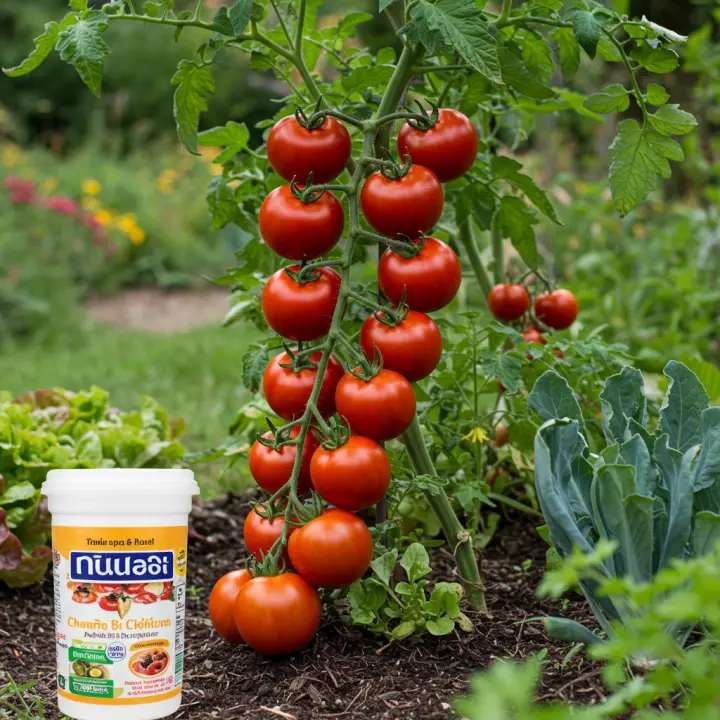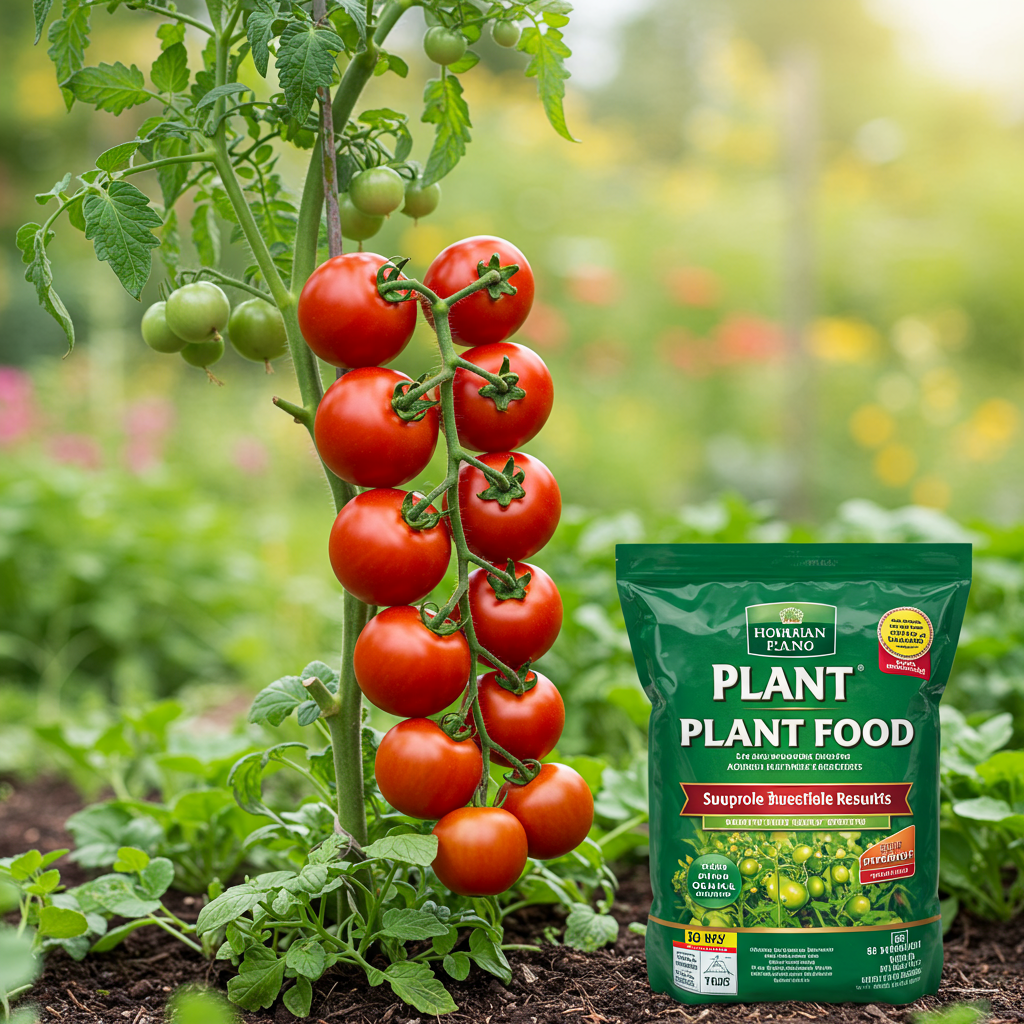Tomato and vegetable plant food is the single most transformative tool in a gardener’s arsenal, second only to sunlight and water. It is the secret ingredient that turns wishful thinking into weighty, vine-ripened tomatoes, crisp bell peppers, and an abundance of zucchini. While soil, sun, and water lay the foundation, the right nutrients are the architectural plans that guide your plants toward their full potential, resulting in the kind of stunning, flavorful harvests that make all the hard work worthwhile. Many gardeners, especially those new to the craft, believe that an armful of compost at the beginning of the season is enough. While a fantastic start, the vigorous growth and heavy production of most vegetables quickly deplete the available resources in the soil. Understanding how to replenish these resources is the key to moving from a modest yield to a truly spectacular one.
This comprehensive guide will walk you through the science and art of feeding your vegetable garden. We’ll demystify the numbers on the fertilizer bag, explore the differences between various types of plant food, and lay out a practical timeline for feeding your plants, ensuring you provide exactly what they need, precisely when they need it most.
The ‘Why’ Behind the Feed: A Simple Guide to Plant Nutrition

Before we can effectively feed our plants, we need to understand what they’re hungry for. Think of plant food not as a magic potion, but as a balanced, multi-course meal designed to fuel specific functions. The primary nutrients your vegetables crave are known as macronutrients, famously abbreviated as N-P-K.
The Big Three: Understanding N-P-K
Every bag of commercial fertilizer prominently displays three numbers, such as 10-10-10 or 5-10-5. This is the N-P-K ratio, representing the percentage by weight of three essential macronutrients.
N – Nitrogen: This is the engine of green, leafy growth. Nitrogen is a core component of chlorophyll, the pigment that allows plants to convert sunlight into energy (photosynthesis). A plant with sufficient nitrogen will have lush, deep green foliage and vigorous stem growth. Think of it as the “accelerator” for your plant’s overall size and vitality.
P – Phosphorus: This is the master of roots, flowers, and fruits. Phosphorus plays a critical role in energy transfer within the plant. It promotes strong, healthy root development, which is essential for nutrient and water absorption. Crucially for vegetable gardeners, it also drives the production of blossoms and, subsequently, the development of fruits and seeds. It’s the “foundation builder” and “reproductive fuel.”
K – Potassium: Often called potash, this is the guardian of overall plant health and vigor. Potassium helps regulate a plant’s internal processes, including water movement and sugar production. It strengthens cell walls, making plants more resilient to drought, temperature stress, and disease. It’s the “immune system booster” that ensures the quality of the fruit.
Beyond the Basics: Secondary and Micronutrients
While N-P-K gets the spotlight, a host of other nutrients are also vital, albeit in smaller quantities. Secondary macronutrients like Calcium (Ca), Magnesium (Mg), and Sulfur (S) are just as important. Calcium is famous for preventing the dreaded blossom-end rot in tomatoes and peppers by strengthening cell walls. Magnesium is the central atom in the chlorophyll molecule, making it essential for that vibrant green color.
Micronutrients, such as iron, manganese, boron, and zinc, are required in tiny trace amounts but a deficiency can still cause significant problems. High-quality plant foods will contain a balanced spectrum of these micronutrients to prevent deficiencies that can stunt growth or reduce your yield.
Decoding the Options: Choosing the Right Tomato and Vegetable Plant Food
The fertilizer aisle can be an intimidating place. With powders, liquids, granules, and spikes all vying for your attention, it’s easy to feel overwhelmed. The choice primarily boils down to your gardening philosophy (organic vs. synthetic) and your preferred application method.
Synthetic vs. Organic Plant Food
This is one of the most significant decisions a gardener can make, with valid arguments on both sides.
Synthetic Fertilizers: These are manufactured from refined mineral salts. Their nutrients are water-soluble and immediately available to the plant.
Pros: They work very quickly, providing a rapid boost to plants that show signs of deficiency. The nutrient analysis is precise, so you know exactly what you are giving your plants. They are often less expensive.
Cons: Because they are so potent, it’s easy to over-fertilize, which can “burn” plant roots and leaves. They don’t improve soil structure; in fact, over time, their salt content can harm the beneficial microorganisms that create healthy soil. They are also more prone to leaching out of the soil with rain or watering, potentially contaminating groundwater.
Organic Fertilizers: These are derived from natural sources, such as animal manure, compost, bone meal, blood meal, and kelp. Instead of feeding the plant directly, they feed the microorganisms in the soil. These organisms then break down the organic matter into a form that the plants can absorb.
Pros: They release nutrients slowly and steadily, reducing the risk of burning your plants. They actively improve soil health and structure, promoting a thriving ecosystem of beneficial microbes, fungi, and earthworms. They are less likely to leach into waterways.
Cons: They work much more slowly than synthetic options, so they aren’t ideal for a quick fix. The exact nutrient content can be less precise. They may be more expensive and can sometimes attract pests if not properly incorporated into the soil.
The Form Factor: Granular, Liquid, or Spikes?
Once you’ve decided between synthetic and organic, you’ll need to choose a form.
Granular: These are dry pellets that are scattered on the soil surface or mixed into the planting hole. They are typically slow-release, breaking down over weeks or months with watering. This makes them excellent for a “set it and forget it” approach at the beginning of the season or for side-dressing during mid-season.
Liquid/Water-Soluble: These fertilizers are concentrated liquids or powders that are diluted in water before application. They provide a fast-acting boost of nutrients because they are absorbed quickly by the plant’s roots (and even leaves, in the case of foliar feeding). They are perfect for container gardens where nutrients leach out quickly and for giving flagging plants an immediate pick-me-up. The downside is they need to be applied more frequently, often every one to two weeks.
Spikes: These are compressed sticks of fertilizer that you push into the soil near the plant’s root zone. They are designed for a very slow, long-term release of nutrients over several months. While convenient, they can create concentrated “hot spots” of nutrients rather than distributing them evenly throughout the root system.
The Art of Application: When and How to Feed Your Garden
Knowing what to use is only half the battle; knowing when and how* to use it is what separates good gardeners from great ones. The nutrient needs of a vegetable plant change dramatically throughout its lifecycle.
Stage 1: At Planting Time
This is your chance to build a strong foundation. When preparing your garden bed or filling your containers, incorporate a balanced, slow-release granular fertilizer into the soil. An organic option rich in phosphorus (like one containing bone meal) is ideal at this stage to encourage robust root system development. Mixing in a generous amount of well-rotted compost will also provide a slow, steady supply of nutrients and improve soil structure.
Stage 2: Early Growth (The “Green Up” Phase)
Once your seedlings are established and have a few sets of true leaves, they enter a period of rapid vegetative growth. They need a steady supply of nitrogen to fuel the production of leaves and stems. A weekly or bi-weekly feeding with a diluted balanced liquid fertilizer can be beneficial, particularly for heavy-feeding plants. Be cautious not to overdo the nitrogen, as this can lead to beautiful, bushy plants with very little interest in producing flowers or fruit.
Stage 3: Flowering and Fruiting (The Production Phase)**
This is the most critical stage for feeding. As soon as you see the first flowers appear on your tomatoes, peppers, or squash, it’s time to change their diet. The plant’s focus shifts from leafy growth to producing blossoms and developing fruit. Its need for phosphorus and potassium skyrockets.
Switch to a “bloom” or “tomato” formula, which will have lower nitrogen and higher phosphorus and potassium levels (e.g.,

